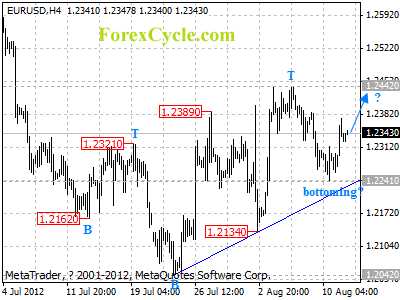The three-legged stool is one of the world’s great, unsung inventions.
It ranks close behind the wheel and clothing.
No-one knows who invented any of those three things.
One day someone realized it’s easier to move things using a wheel or rollers. One day some ancient person figured they could keep warm using animal skins…
And one day someone worked out that a three-legged stool solved the problem of wobbly four-legged stools.
That’s the thing. The mark of a three-legged stool is its stability…you can trust it to stay firmly in place.
In short, a three-legged stool isn’t something you fear could wobble and collapse at any moment. And yet, one global investment manager says investment markets are ‘resting on a three-legged stool’.
You won’t believe which economies he says are the three strong legs for investments…
Stable or Shaky Investments?
Today’s Australian interviews Alex Friedman, chief investment officer of UBS Wealth Management. The article says his investment group manages USD$1.6 trillion.
According to The Australian:
‘He likens the investment markets today as “resting on a three-legged stool”, with one leg being the eurozone, one being the US and the other China.’
Oy, vey.
We don’t know about you, but that’s not a stool we’d want to rest our derriere on…especially not $1.6 trillion-worth.
But Mr Friedman likes what he sees. The article goes on to explain his view:
‘”In China, we think essentially that the landing has already taken place and that it’s a soft landing. We see growth being somewhere between 7.5 and 8 per cent”…‘”The US is a bit more complicated. We think it’s going to be reasonable but sub-par growth, 1.5 per cent, maybe 2.3 per cent in the second and third quarter.”
‘As for the eurozone, he says it has several things working in its favour.
‘”Its surprises are becoming less negative and the European Central Bank is kind of acting in a more dovish way and markets are getting excited.”‘
In other words, China will keep growing – because those clever central planners have stopped the economy crashing.
The US economy will keep growing and people will keep spending – that must be true because a chart in yesterday’s Australian Financial Review forecast the cumulative US budget deficit will be about 400% of annual spending by 2077.
And as for Europe, well, all the bad stuff isn’t as bad as the bad stuff we’ve already had…so that must be good!
Investment Blindfolds and Earmuffs On
Understanding what the big money managers think is key to making money in this market.
It’s part of the reason why Slipstream Trader, Murray Dawes plans on chewing the fat with hedge fund types in London this week.
He’s already had an off-the-record chat with one guy. Not surprisingly, the message he’s heard is that China will be fine. Apparently the market is focusing on the wrong things.
What? Like the fact that the Chinese credit boom is bigger than the US and UK credit booms of the 2000s…
And bigger than Japan’s 1980s credit boom, and Korea’s 1990s credit boom?
But still, China is different.
Because rather than the pesky market identifying and purging unsustainable booms (as happened in the US, UK, Japan and Korea), China is a centrally planned economy. That means the market can’t punish the economy for all of its bad investments.
And that’s a good thing is it?
We wouldn’t bet on it. If someone’s sawing away at one of the legs on your three-legged investment stool, you’d probably like to know about it.
Wearing earmuffs and a blindfold may let you ignore what’s happening, but not for long. You’ll find out what’s happened when one of the legs is gone and you’re lying flat on your backside.
Anyway, that’s what we think. But it’s not what the big investment pros think…
Invest in Stocks…Carefully
Whether it’s China, the US or Europe, the big pros like UBS’s Alex Friedman are clearly getting bullish again. And unless we’re mistaken, based on what we’ve heard from Murray while he’s in London, he’s hearing the same message too.
That tells us we’re right to advise you to have at least some stock market exposure (10-20%, as a rough guide).
Because when you’ve got big fund managers throwing around $1.6 trillion in the market, there’s no doubt it will impact all asset prices. If the market rallies another 20% or more from here, you don’t want to miss out.
But that doesn’t mean you should put your whole wealth into the markets. Because, as we’ve said many times, the stock market is high risk.
In simple terms, China, the US and Europe aren’t a sturdy three-legged stool. They are three highly leveraged and highly indebted economies that are trying to hide and postpone everything that’s wrong with them.
In our view that’s a recipe for disaster rather than strength. But with big money flowing into the market it still makes sense to follow the actions of the big moneymen.
Just proceed with caution.
Cheers,
Kris
Related Articles
Market Pullback Exposes Five Stocks to Buy
Why I’ve Done a U-Turn on Solar Energy




